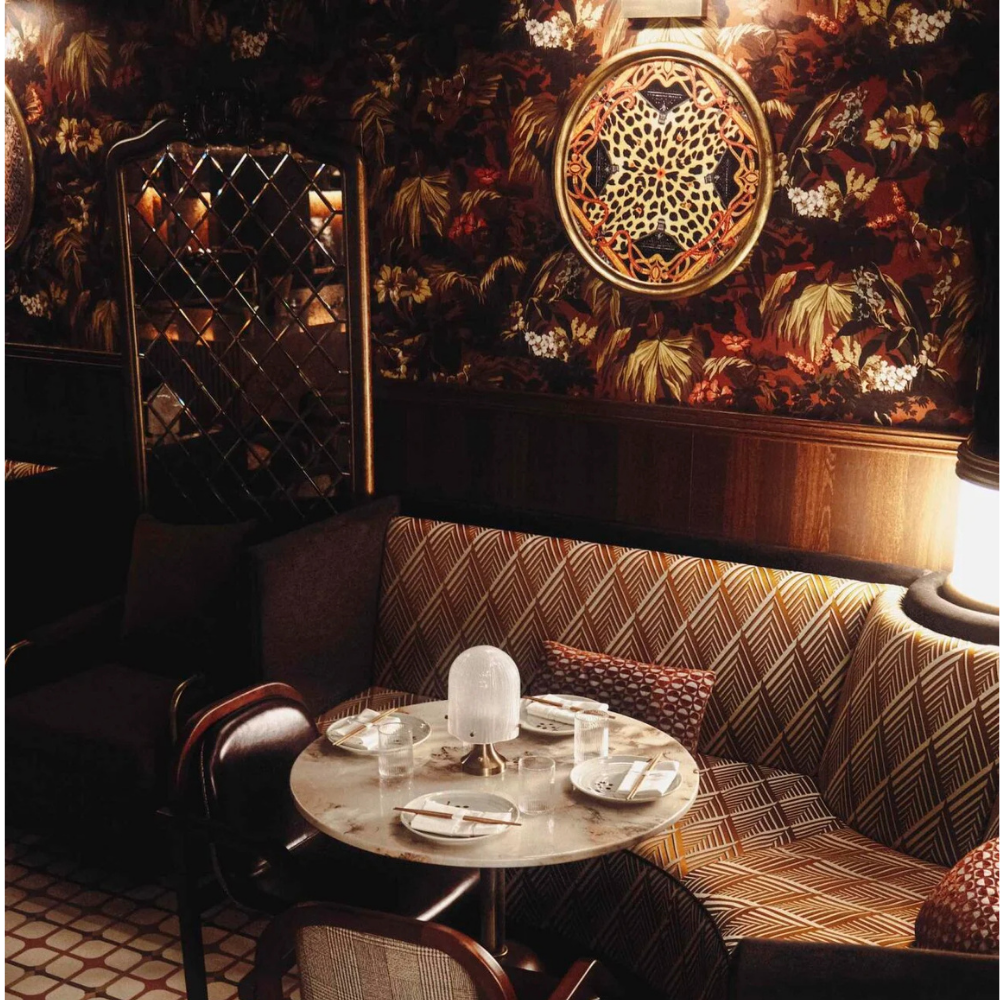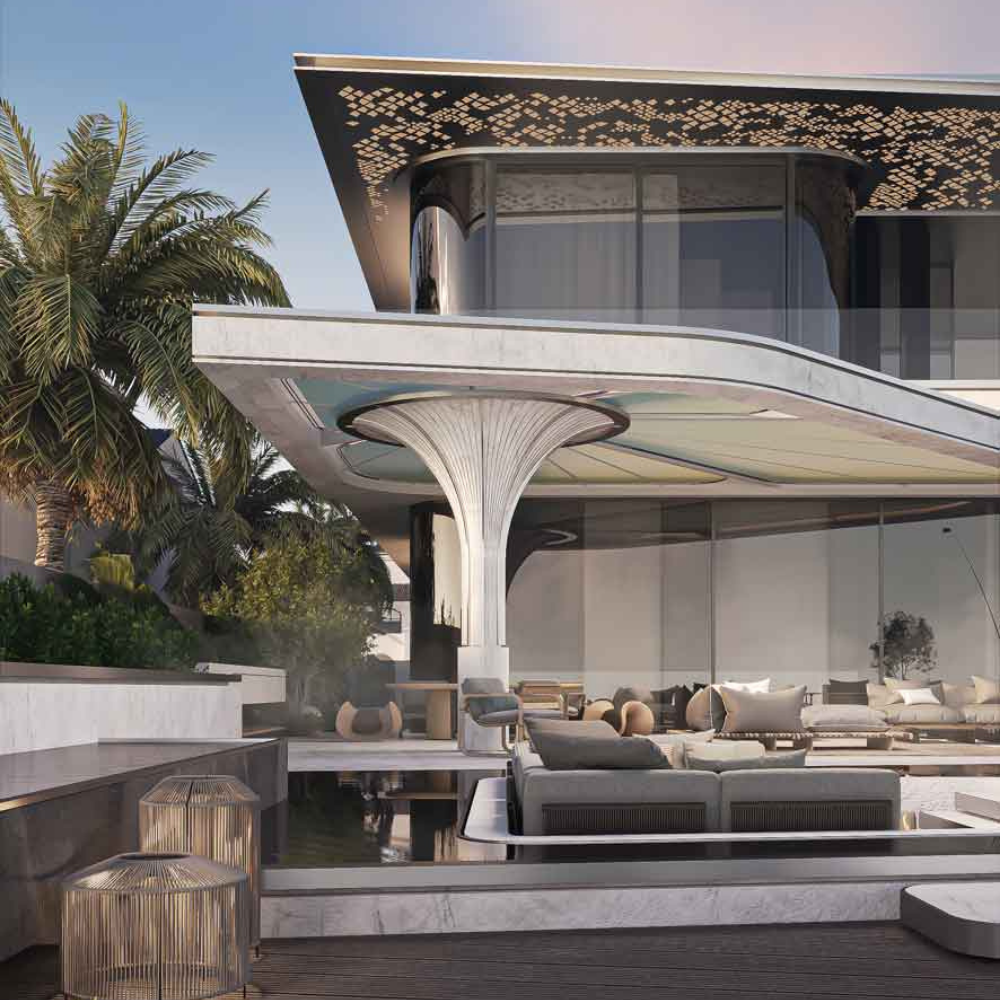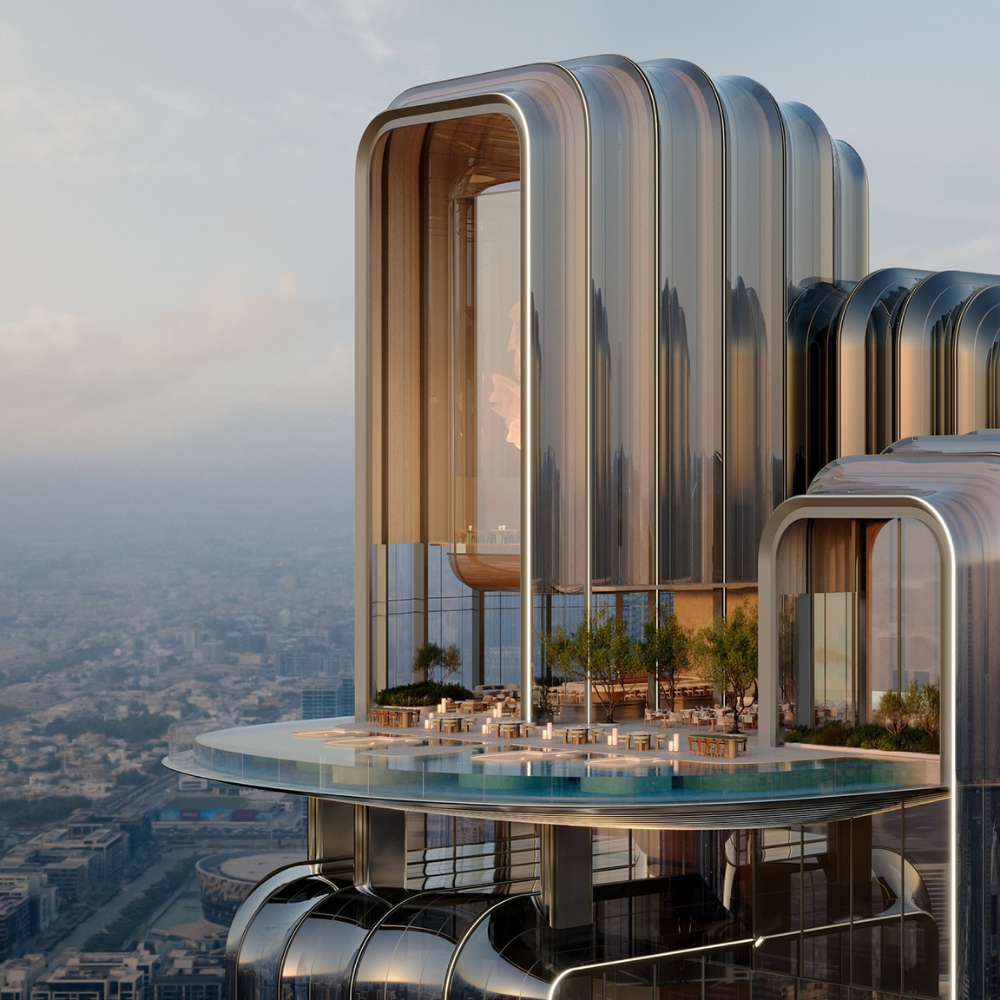
Dubai’s Hint of GABA in Design
By Vellum & Forge Editorial
In tea culture, GABA is more than a buzzword; it’s a process. Leaves are sealed away from air and light—traditionally in nitrogen-rich, oxygen-free chambers—so that glutamic acid converts to gamma-aminobutyric acid. The outcome is a brew celebrated for its calming clarity; the method is as important as the taste. In the late 1980s, Japanese research formalised this anaerobic approach, which today still defines authentic GABA production. The design metaphor is potent: remove the noise (oxygen), soften the glare (light), and let something quieter, truer, and more concentrated emerge.
Dubai—kinetic, luminous, maximal by reputation—has begun to experiment with this quieter current. A telling sign is GABA, Dubai Marina: a hospitality concept conceived and delivered by S3T Koncepts that pairs a calm, Asian-leaning tea lounge with a hidden, mood-rich speakeasy. The project appears in S3T’s own portfolio and on Architizer, underscoring its design intent and delivery credentials.

A threshold lesson in calm
Finding GABA is itself an exercise in composure. The venue sits on the mezzanine of Marina Gate 2 Towers, just above the everyday retail flow; regulars will point you past Carrefour, into the quiet, and toward a door that doesn’t scream for attention. This geography matters because it separates GABA from the Marina’s bustle at the last possible moment, like the final seconds before tea is poured. The location is consistently documented by local reviewers, right down to valet details—mundane, yes, but part of the ritual of arrival.
Inside, the tone is deliberate: tea room by day, speakeasy by night. Critics describe a cocoon of velvet, low light, and curated vinyl—a retro-luxe hush that swaps Dubai’s neon tempo for something measured. Several outlets have converged on the same reading: the place asks you to slow down and “sip intentionally.” That phrasing could double as a design brief. That communications arc—quietly launched, softly amplified—mirrors the aesthetic: confident, but not loud.

From fermentation to formation: translating GABA into space
Anaerobic tea processing is about controlling inputs to change outcomes. In interiors, the equivalent is selective reduction: reduce glare, reduce echo, reduce visual interference, reduce cognitive load. If GABA tea is transformed in stillness, a GABA-inspired room is shaped by subtraction—what you remove is as critical as what you add.
Begin with light. GABA’s “no air, no light” chamber suggests filtering Dubai’s intense sun rather than fighting it with spectacle.
Deep reveals, layered sheers, and electrochromic glazing modulate daylight so the envelope breathes on your terms. This isn’t a blackout; it’s a quieting. In GABA’s own hospitality setting, the evening pivot to low, warm light completes that descent into calm.
Then material. Choose finishes that patinate—bronze, unlacquered brass, open-pore timber, lime plaster—materials that record time as a virtue, not a defect.
The point is to let texture carry the room instead of reflectivity. This echoes what reviewers notice in GABA’s interiors: tactility over gloss, memory over mirror.
Consider sound as carefully as light. In a true GABA room, acoustic plaster ceilings, soft joinery interfaces, and concealed speakers keep decibels in check.
You should never see the tech that’s keeping you calm; it should work like GABA itself—present, but metabolised.
Finally, systems. GABA’s controlled chamber is a reminder that infrastructure shapes experience.
In villas and residences, that means concealed wiring, silent actuators, and touch-sensitive cabinetry; smart scenes that fade, not flash; controls that consolidate into one minimal interface instead of a wall of switches. Think of this as the nitrogen atmosphere of the home: a set of unseen conditions that changes how the space feels.

Dubai Marina as a live laboratory
GABA’s hospitality format gives us a case-in-point. S3T Koncepts positions the project as an integrated design-and-delivery exercise—fit-out precision, crafted finishes, and a mood that holds from arrival to exit.
Architizer’s listing validates the authorship and situates GABA inside a portfolio that spans residential and commercial interiors, indicating a transferable toolkit for homes. This matters for clients who want to borrow hospitality-grade calm for private villas and branded residences.
The addressing is equally instructive. GABA tucks itself above the retail plane of Marina Gate 2, proving you don’t need a grand axial entrance to feel exclusive; you need a sequence.
Tea lounge first, then the hidden bar—a two-act play that swaps pace mid-visit. For urban residential towers, that lesson applies to lobbies and amenity floors: calm the threshold, then deepen the mood as you move inward.
And the coverage chorus—from What’s On to Gault&Millau to The Ethicalist—isn’t just hype; it triangulates the agenda: restraint, intimacy, and a contemplative tempo. Those are the words luxury design in Dubai increasingly wants associated with it.

If GABA were a villa
Picture a Palm Jumeirah home that does what GABA does: filters rather than flaunts. Morning light slips through layered screens; a tea alcove sits between kitchen and garden, tuned for dusk. Joinery swallows the tech—hinges whisper, cooling zones adapt unobtrusively, audio is everywhere and nowhere. You don’t “turn on” the house; the house settles around you.
Now transpose that to a desert pavilion on the city’s edge: stone that ages in place, a courtyard that inhales at night, and acoustic lime plaster that quiets the day. The architecture shows restraint because the climate already makes the grand gesture.
These are thought experiments, yes—but faithful to the philosophy that created GABA tea in the first place: limit the stimulus, deepen the essence.

Challenges worth embracing
Dubai’s sun and dust punish superficial detailing; the answer is better envelopes, not heavier chandeliers. Electrochromic glass and deep overhangs aren’t gimmicks here; they are mood and performance in the same stroke. Clients accustomed to glitter may need a new metric of luxury: restfulness.
Vellum & Forge: brewing calm into hardware
Our own approach at Vellum & Forge aligns instinctively with GABA’s ethos. We work in solid metals that accept patina with dignity, specify switch plates and levers that are tactile but visually discreet, and coordinate with integrators so that control systems don’t scar the walls. In other words, we treat hardware as the haptic part of calm—the point where a human hand meets an interior’s nervous system.
GABA reminds Dubai’s design scene that serenity is not an absence of ideas; it’s the presence of intention. From tea leaf to threshold to door handle, the craft is the same: reduce the noise, concentrate the essence—and let the calm do the talking.
An Heirloom Approach. Tactile Intelligence. Considered Decisions.
Invite Vellum & Forge into your next masterpiece
Begin your collaboration: studio@vellumforge.com



